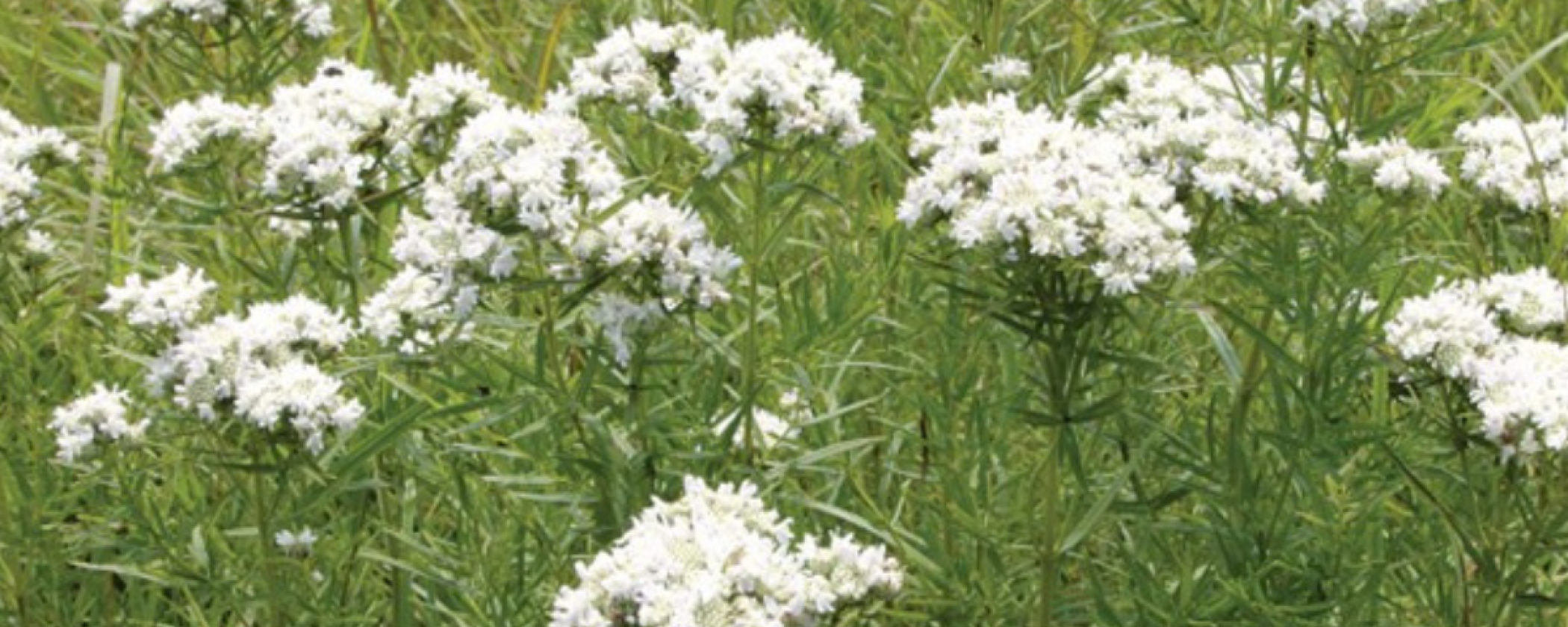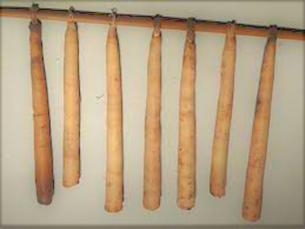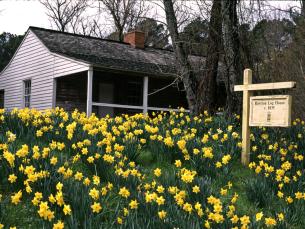
A Mint for Health and Herb Gardens: Narrowleaf Mountain Mint
By: Chris AdamsNarrowleaf mountain mint provides a nectar source for pollinators and is well-suited for use in restoration. It attracts many species of butterflies and bees. It is an essential pollinator of pepper, watermelon, strawberry, and tomato plants.
P. tenuifolium is a native, warm-season, perennial forb that grows 2–3 ft tall and spreads equally wide. It is a member of the Lamiaceae (mint) family, and the crushed flowers or leaves emit a minty scent. Like other mints, it has a four-angled stem and small opposite leaves. The stem is smooth, without hairs, and is slender and stiff. The plant has a taproot and rhizomes.
The pale green leaves are approximately 0.15–0.6 in wide and 0.5–2 in long. They are smooth or minutely hairy on the uppermost leaves. The upper leaves are stalkless, while the lowest leaves have short stems. There are short leafy branches in the axils.
The plant has profuse clusters of small, tubular, white flowers which bloom in the middle of summer, July through August. The flower petals have an upper lip and a three-lobed lower lip. Clusters stagger their bloom period over an extended time. It is thought that pollinators prefer this species because the florets are tightly clustered, have short corolla tubes, and are white. The flowers are an excellent source of nectar for butterflies.
It grows in dry to medium wet soils and in full sun to partial shade. It can be found in rocky ground in open prairies and upland woods, as well as in low areas, wet thickets, pine barrens, oak woods, and on the edges of wooded areas. It is a native plant of Hempstead County and many other counties in Arkansas.
Like many members of the mint family, you can use mountain mint as an edible. Native Americans used the plant for colds, fever, and headaches. Today, people use mountain mint as a mild-flavored tea, and the leaves and buds are often eaten in salads. Mountain mint tea is known to be curative, diaphoretic, and carminative. Note: This resource on this edible plant is intended as general information only. As with any food, there is a potential for allergic reactions when consuming native edibles. Always seek the advice of a health professional with any questions about touching or eating any plant matter.
This plant is in the Purdom garden. This donated plant was placed in the Purdom herb garden to aid in pollination of the herbs and as an educational topic for its historical medicinal uses.




